#d1ccd0 Color Information
In a RGB color space, hex #d1ccd0 is composed of 82% red, 80% green and 81.6% blue. Whereas in a CMYK color space, it is composed of 0% cyan, 2.4% magenta, 0.5% yellow and 18% black. It has a hue angle of 312 degrees, a saturation of 5.2% and a lightness of 81%. #d1ccd0 color hex could be obtained by blending #ffffff with #a399a1. Closest websafe color is: #cccccc.
-
- R 82
- G 80
- B 82
-
- C 0
- M 2
- Y 0
- K 18
● #d1ccd0 color description : Grayish magenta.
#d1ccd0 Color Conversion
The hexadecimal color #d1ccd0 has RGB values of R:209, G:204, B:208 and CMYK values of C:0, M:0.02, Y:0, K:0.18. Its decimal value is 13749456.
| Hex triplet | d1ccd0 | #d1ccd0 |
|---|---|---|
| RGB Decimal | 209, 204, 208 | rgb(209,204,208) |
| RGB Percent | 82, 80, 81.6 | rgb(82%,80%,81.6%) |
| CMYK | 0, 2, 0, 18 | |
| HSL | 312°, 5.2, 81 | hsl(312,5.2%,81%) |
| HSV (or HSB) | 312°, 2.4, 82 | |
| Web Safe | cccccc | #cccccc |
| CIE-LAB | 82.537, 2.443, -1.38 |
|---|---|
| XYZ | 59.271, 61.295, 68.38 |
| xyY | 0.314, 0.324, 61.295 |
| CIE-LCH | 82.537, 2.806, 330.541 |
| CIE-LUV | 82.537, 2.603, -2.517 |
| Hunter-Lab | 78.291, -1.876, 3.02 |
| Binary | 11010001, 11001100, 11010000 |
Color Schemes with #d1ccd0
Alternatives to #d1ccd0
Below, you can see some colors close to #d1ccd0. Having a set of related colors can be useful if you need an inspirational alternative to your original color choice.
#d1ccd0 Preview
This text has a font color of #d1ccd0.
<span style="color:#d1ccd0;">Text here</span>This paragraph has a background color of #d1ccd0.
<p style="background-color:#d1ccd0;">Content here</p>This element has a border color of #d1ccd0.
<div style="border:1px solid #d1ccd0;">Content here</div>.text {color:#d1ccd0;}.background {background-color:#d1ccd0;}.border {border:1px solid #d1ccd0;}Shades and Tints of #d1ccd0
A shade is achieved by adding black to any pure hue, while a tint is created by mixing white to any pure color. In this example, #010101 is the darkest color, while #f6f5f6 is the lightest one.
-
#010101
#010101rgb(1,1,1) -
#0b0a0b
#0b0a0brgb(11,10,11) -
#151315
#151315rgb(21,19,21) -
#201c1f
#201c1frgb(32,28,31) -
#2a2629
#2a2629rgb(42,38,41) -
#342f33
#342f33rgb(52,47,51) -
#3e383d
#3e383drgb(62,56,61) -
#494247
#494247rgb(73,66,71) -
#534b51
#534b51rgb(83,75,81) -
#5d545c
#5d545crgb(93,84,92) -
#685e66
#685e66rgb(104,94,102) -
#726770
#726770rgb(114,103,112) -
#7c707a
#7c707argb(124,112,122)
-
#877984
#877984rgb(135,121,132) -
#90848d
#90848drgb(144,132,141) -
#998e97
#998e97rgb(153,142,151) -
#a298a0
#a298a0rgb(162,152,160) -
#aca3aa
#aca3aargb(172,163,170) -
#b5adb3
#b5adb3rgb(181,173,179) -
#beb7bd
#beb7bdrgb(190,183,189) -
#c8c2c6
#c8c2c6rgb(200,194,198) -
#d1ccd0
#d1ccd0rgb(209,204,208) -
#dad6da
#dad6dargb(218,214,218) -
#e4e1e3
#e4e1e3rgb(228,225,227) -
#edebed
#edebedrgb(237,235,237) -
#f6f5f6
#f6f5f6rgb(246,245,246)
Tones of #d1ccd0
A tone is produced by adding gray to any pure hue. In this case, #d1ccd0 is the less saturated color, while #fe9feb is the most saturated one.
-
#d1ccd0
#d1ccd0rgb(209,204,208) -
#d5c8d2
#d5c8d2rgb(213,200,210) -
#d8c5d4
#d8c5d4rgb(216,197,212) -
#dcc1d7
#dcc1d7rgb(220,193,215) -
#e0bdd9
#e0bdd9rgb(224,189,217) -
#e4b9db
#e4b9dbrgb(228,185,219) -
#e7b6dd
#e7b6ddrgb(231,182,221) -
#ebb2e0
#ebb2e0rgb(235,178,224) -
#efaee2
#efaee2rgb(239,174,226) -
#f3aae4
#f3aae4rgb(243,170,228) -
#f6a7e6
#f6a7e6rgb(246,167,230) -
#faa3e9
#faa3e9rgb(250,163,233) -
#fe9feb
#fe9febrgb(254,159,235)
Color Blindness Simulator
Below, you can see how #d1ccd0 is perceived by people affected by a color vision deficiency. This can be useful if you need to ensure your color combinations are accessible to color-blind users.
